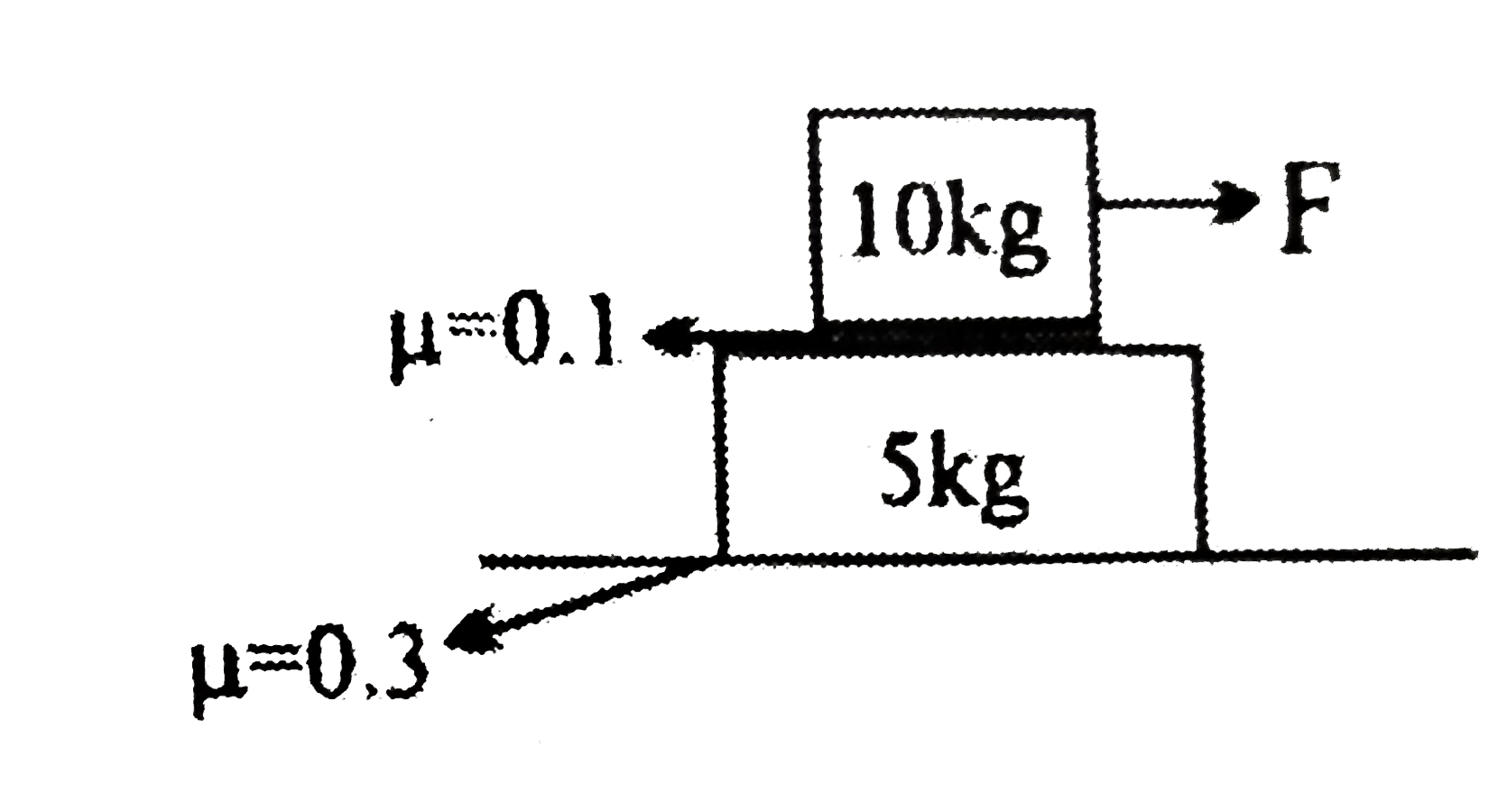Figure shows three blocks on a rough surface under the influene of a force P of the same magnitude in all the three cases. Coefficient of friction is the same between each block and the ground. What possile relation holds between the magnitudes of normal reaction and friction force?(Assume that the blocks do not overturn about edge.) Here fA,fB and fC are frictional forces and NA,NB and NC are reactions.

NA>NC>NB
fA>fC>fB
fC>fA=fB
NC>NA=NB
The correct Answer is:A, B, D

NA=mg+Psinθ
NB=mg−Psinθ
NC=mg
Clearly, NA>NC>NB
Now to find relation between frictions:
i. Let sliding not occur:
fA=Pcosθ,fB=Pcosθ,fC=P
⇒fC>fA=fB
ii. Let sliding occur of all contact surfaces:
fA=μNA,fB=μNB,fC=μNC
⇒fA>fC>fB
Topper's Solved these Questions
- MISCELLANEOUS VOLUME 2BOOK - CENGAGE PHYSICSCHAPTER - MISCELLANEOUS VOLUME 2EXERCISE - LC_TYPE
34 Videos
- MISCELLANEOUS VOLUME 2BOOK - CENGAGE PHYSICSCHAPTER - MISCELLANEOUS VOLUME 2EXERCISE - INTEGER_TYPE
10 Videos
- MISCELLANEOUS VOLUME 2BOOK - CENGAGE PHYSICSCHAPTER - MISCELLANEOUS VOLUME 2EXERCISE - INTEGER_TYPE
10 Videos
- MISCELLANEOUS KINEMATICSBOOK - CENGAGE PHYSICSCHAPTER - MISCELLANEOUS KINEMATICSEXERCISE - Interger type
3 Videos
- NEWTON'S LAWS OF MOTION 1BOOK - CENGAGE PHYSICSCHAPTER - NEWTON'S LAWS OF MOTION 1EXERCISE - Integer
5 Videos
Similar Questions
Two blocks are connected by a string and pulled by a force F=50N. If the coefficient of friction between the blocks and the ground is 0.2, friction force between the block B and the ground is :

View SolutionA block of mass 0.1 kg is held against a wall by applying a horizontal force of 5 N on the block. If the coefficient of friction between the block and the wall is 0.5, then the magnitude of the frictional force acting on the block is
View Solution
Knowledge Check

When F = 2N, the frictional force between 5 kg block and ground isA2NB0C8 ND10 N
When F = 2 N , the frictional force between 5 kg block and ground is :A2NB0C8 ND10 NA block is sliding on a rough horizontal surface. If the contact force on the block is √2 times the frictional force, the coefficient of friction is
A0.25B1√2C√2D1
A block of mass 0.1 is held against a wall applying a horizontal force of 5N on block. If the coefficient of friction between the block and the wall is 0.5, the magnitude of the frictional force acting on the block is:
View SolutionA block of mass 2 kg is placed on the floor. The coefficient of static friction is 0.4. A force F of 3 N is applied on the block as shown in figure. The force of friction between the block and the floor is (Take g=10ms−2)

View SolutionIn Fig. 7.149 , coefficient of friction between the block and the floor is μ . Force F that will move the block on the floor with a uniform speed is :

View SolutionA block of mass 6 kg is being pulled by force 24 N as shown . If coefficient of friction between the block and the surface is 0.6 , frictional force acting on the block is :

View Solution
All the blocks shoen in the figure are at rest.The pulley is smooth and the strings are light. Coefficient of friction at all the contacts in 0.2 A frictional force of 10 N acts between A and B. The blocks A is about to slide on block B. The normal reaction and frictinal force exerted by the ground on the blocks B is.
View Solution
